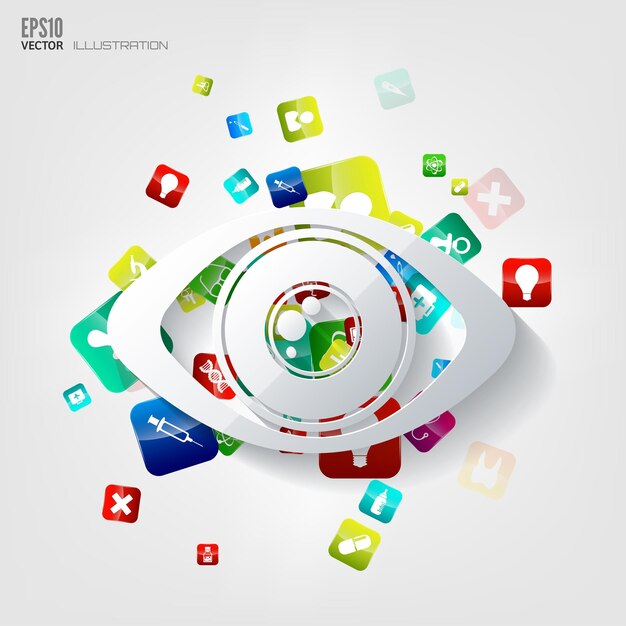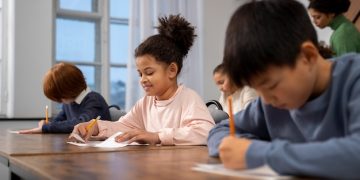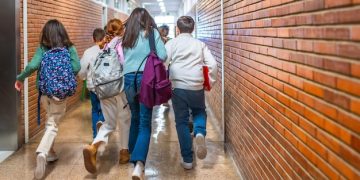Social Media’s Impact on Student Learning and Well-being

The Impact of Social Media on Student Learning and Well-being: A Comprehensive Analysis reveals a complex relationship, highlighting social media’s potential to both enhance educational experiences and pose risks to mental and academic health among students.
Navigating the digital age presents unique challenges and opportunities for students. This article, The Impact of Social Media on Student Learning and Well-being: A Comprehensive Analysis, delves into how these platforms affect academic performance and mental health, providing insights for educators, parents, and students alike.
Understanding the Dual Nature of Social Media in Education
Social media has become an integral part of students’ lives, offering unprecedented access to information and connection. However, its influence on education and well-being is a double-edged sword, presenting both opportunities and challenges that need careful consideration.
The pervasive nature of social media requires us to examine its multifaceted impact on students. From aiding collaborative learning to potentially hindering academic focus, the landscape is complex and ever-evolving.
Enhancing Learning Through Social Media
Social media platforms can be powerful tools for educational enrichment, facilitating collaborative projects, connecting students with experts, and providing access to a wealth of resources that extend beyond the traditional classroom.
- Collaborative Learning: Social media enables students to work together on projects, share ideas, and learn from one another, regardless of geographical boundaries.
- Access to Information: Platforms like YouTube, educational blogs, and online forums provide students with a vast library of information, tutorials, and academic discussions.
- Connecting with Experts: Social media allows students to engage with professionals and experts in various fields, gaining valuable insights and mentorship opportunities.
- Staying Updated with Current Events: Students can stay informed about global issues and current events, fostering a sense of civic engagement and awareness.
Conversely, the constant connectivity and the allure of instant gratification can distract students from their studies, affecting their ability to concentrate and retain information.

The Negative Impact on Academic Performance and Attention Span
While offering numerous educational benefits, excessive social media use can negatively impact academic performance and attention span. Notifications, endless scrolling, and the pressure to stay connected can distract students from assignments and classwork.
The constant barrage of information and stimulation online can shorten attention spans and make it difficult for students to focus on complex tasks that require sustained concentration, which is detrimental to academic success.
Distractions and Reduced Focus
The allure of social media can be difficult to resist, leading to procrastination and reduced academic performance. Students may find themselves spending more time on social media than studying, affecting their grades and overall learning experience.
Multitasking Myth
Research suggests that multitasking, especially while studying, harms cognitive functions. Trying to juggle social media updates with academic work often results in reduced efficiency, lower quality work, and increased stress levels.
Social Media and Student Mental Health
The impact of social media on student mental health is a growing concern. While providing avenues for connection and support, these platforms can also contribute to anxiety, depression, and feelings of inadequacy. The curated nature of online content often leads to social comparison and a distorted perception of reality.
Students are exposed to idealized versions of others’ lives, leading to feelings of envy and a constant pressure to measure up. This can erode self-esteem and contribute to mental health issues.
- Cyberbullying: Social media can be a breeding ground for cyberbullying, which can have severe psychological consequences for victims, including anxiety, depression, and even suicidal thoughts.
- Social Comparison: The curated nature of social media often leads to social comparison, where students compare their lives with others, leading to feelings of inadequacy and low self-esteem.
- Fear of Missing Out (FOMO): The constant stream of updates can create a sense of FOMO, compelling students to stay connected and potentially leading to anxiety and stress.
Conversely, online communities can offer support and connection for students struggling with mental health issues. Sharing experiences and accessing resources can be beneficial for those seeking help.

Combating Isolation and Fostering Connection
Social media can play a crucial role in combating isolation and fostering connection among students, particularly those who may struggle with social interactions in traditional settings. Online communities can provide a sense of belonging and support for students with shared interests or experiences.
For students who may feel marginalized or different, social media can provide a safe space to connect with others who understand them. This can be especially important for students from minority groups or those with disabilities.
Building Online Communities
Social media allows students to connect with like-minded individuals, forming online communities centered around shared interests, hobbies, or academic pursuits.
Supporting Mental Health
Online support groups and mental health communities can provide valuable resources and a sense of connection for students struggling with mental health challenges. Sharing experiences and accessing information can be empowering and therapeutic.
Strategies for Responsible Social Media Use
Promoting responsible social media use among students is crucial to mitigate the negative impacts and harness the benefits. Education, parental involvement, and self-regulation are key components of a healthy digital lifestyle. Setting boundaries, being mindful of content consumption, and prioritizing real-life interactions can help students navigate the digital world responsibly.
Implementing strategies that encourage critical thinking, media literacy, and self-awareness can empower students to make informed choices about their social media use and protect their well-being.
- Setting Time Limits: Establishing daily or weekly time limits for social media use can help students manage their screen time and prioritize other activities.
- Mindful Content Consumption: Encouraging students to be selective about the content they consume and to unfollow accounts that trigger negative emotions can improve their mental well-being.
- Prioritizing Real-Life Interactions: Emphasizing the importance of face-to-face interactions and offline activities can help students maintain a balanced lifestyle and foster genuine connections.
Integrating digital literacy programs into the curriculum can equip students with the skills to critically evaluate online information, identify misinformation, and protect themselves from cyberbullying and online threats.
The Role of Educators and Parents in Guiding Social Media Use
Educators and parents play a vital role in guiding students’ social media use, providing support, and fostering responsible digital citizenship. Open communication, setting clear expectations, and creating a safe environment for discussion are essential for addressing the challenges and opportunities presented by social media.
By working together, educators and parents can help students develop healthy habits, protect their mental health, and harness the educational potential of social media while minimizing the risks.
Promoting Digital Literacy
Educators can integrate digital literacy programs into the curriculum, teaching students how to critically evaluate online information, identify misinformation, and protect themselves from cyberbullying and online threats.
Encouraging Open Communication
Parents can create a safe and supportive environment for discussing social media use, encouraging their children to share their experiences and concerns. Open communication can help parents identify potential issues and provide guidance.
| Key Aspect | Brief Description |
|---|---|
| 📚 Educational Benefits | Social media enables collaborative learning, access to vast information, and connections with experts. |
| 🧠 Mental Health Impact | Can lead to anxiety, depression, and feelings of inadequacy due to social comparison and cyberbullying. |
| 🌐Combating Isolation | Provides platforms for students to connect, build communities, and receive support. |
Frequently Asked Questions
▼
It can negatively affect grades if it leads to distractions, reduced focus, and procrastination. However, used responsibly, it can also enhance learning through access to educational resources.
▼
Signs include spending excessive time online, neglecting responsibilities, feeling anxious when unable to access social media, and prioritizing social media over real-life interactions.
▼
Parents can use parental control apps, set clear rules about screen time, have open conversations about online activities, and stay informed about the platforms their child uses.
▼
Yes, it can be used to enhance collaborative learning, access diverse information, connect with experts, and stay updated on current events, making learning interactive and accessible.
▼
Schools can implement digital literacy programs, educate students about cyberbullying, and create a safe environment for discussing the positive and negative aspects of online activities.
Conclusion
In conclusion, the impact of social media on student learning and well-being is a complex interplay of benefits and challenges. By promoting responsible use, fostering digital literacy, and encouraging open communication, educators, parents, and students can navigate this landscape to harness the positive aspects while mitigating the risks.





